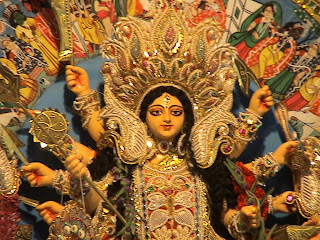OHM NAMASHIVAYA
"SHIVARATRI ARATTU MAHOLSAV"
TheMaruthoor Mahadeva Kshetram Trust is celebrating the
“Shivaratri Arattu Maholsav”of Maruthorkonam Mahadeva Temple from
25th of february to 6th of march 2011 with Special pooja of Ganpati Temple and Pongala of Devi temple. The ceremony begins with the “Trikodiyettu” on feb 25th and the celebrations and special poojas las till the “Tiru Arattu” on march 6th. Many special poojas are being offered during this special occassion . There is also cultural entertainment programs for the devotees of Lord Shiva who comes to witness this grand event.
The shedule of various pooja is enlisted below:
First Tiru Ulsav( Feb 25th 2011,Friday)
4: 30 AM - Pallyunarthal
5:00 AM - Nirmalya Darsanam, Abhishekam
5:30 AM - Mahaganapati Homam
6:30 AM - Ushapooja
8:00AM - Trikodiyettupooja
8:30 to 9:00 AM -TRIKODIYETTU Followed by Purana Parayanam upto 12 PM
2:00 PM - Samooha Sadya
5:00 PM - Nadaturakkal
6:30 PM - Deeparadhana
7: 30 PM - Bhajan
8:00 PM - Athazhapooja
8:15 PM - Sreebhootha Bali
8:30 PM - Musical Feast
9:00 PM - Ganamela
Second Tiru Ulsav( Feb 26th 2011, Saturday)
4: 30 AM - Pallyunarthal
5:00 AM - Nirmalya Darsanam, Abhishekam
5:30 AM - Mahaganapati Homam
6:30 AM - Ushapooja
8:00AM - Kalasa Pooja
9:00 AM - Sree Bhootha Bali
10:00 AM - Kalashabhishekam, Uchapooja
Followed by Purana Parayanam upto 12 PM
5:00 PM - Nadaturakkal
6:30 PM - Deeparadhana
7:00 PM - Bhajan
7: 30 PM - AthazhaPooja
8:00 PM - Sreebhootha Bali
8:30 PM - Vill Pattu
Third Tiru Ulsav( Feb 27th 2011, Sunday)
4: 30 AM - Pallyunarthal
5:00 AM - Nirmalya Darsanam, Abhishekam
5:30 AM - Mahaganapati Homam
6:30 AM - Ushapooja
8:00AM - Kalasa Pooja
9:00 AM - Sree Bhootha Bali
10:00 AM - Kalashabhishekam, Uchapooja
Followed by Purana Parayanam upto 12 PM
5:00 PM - Nadaturakkal
6:30 PM - Deeparadhana
7:00 PM - Bhajan
7: 30 PM - Pushpabhishekam
8:30 PM - Athazhapooja
9;00 PM - SreeBhoothaBali
Fourth Tiru Ulsav( Feb 28th 2011,Monday)
4: 30 AM - Pallyunarthal
5:00 AM - Nirmalya Darsanam, Abhishekam
5:30 AM - Mahaganapati Homam
6:30 AM - Ushapooja
8:00AM - Kalasa Pooja
9:00 AM - Sree Bhootha Bali
10:00AM - MahaMrityunjaya Homam
11:30 AM - Kalashabhishekam, Uchapooja
Followed by Purana Parayanam upto 12 PM
5:00 PM - Nadaturakkal
6:30 PM - Deeparadhana
7:00 PM - Bhajan
7: 30 PM - AthazhaPooja
8:30 PM - Sreebhootha Bali
9:00 PM - Bhakthi Gana Sudha
Fifth Tiru Ulsav( March 1st 2011,Tuesday)
4: 30 AM - Pallyunarthal
5:00 AM - Nirmalya Darsanam, Abhishekam
5:30 AM - Mahaganapati Homam
6:30 AM - Ushapooja
8:00AM - Kalasa Pooja
9:00 AM - Sree Bhootha Bali
10:00 AM - Kalashabhishekam, Uchapooja
Followed by Purana Parayanam upto 12 PM
5:00 PM - Nadaturakkal
6:30 PM - Deeparadhana
7:00 PM - Bhajan
7: 30 PM - AthazhaPooja
8:30 PM - Sreebhootha Bali
9:00 PM - Mono Act
SixthTiru Ulsav( March 2nd 2011,Wednesday) MAHASHIVARATRI
4: 00 AM - Pallyunarthal
4:30 AM - Nirmalya Darsanam, Abhishekam
5:00 AM - Mahaganapati Homam
6:30 AM - Ushapooja
7:00AM - Kalasa Pooja
7:30 AM - Sree Bhootha Bali
8:30 AM - Pongala Of Devi Temple
From 8:45 AM - Shayana Pradakshinam , Tulabharam etc
10:30 AM - Kalashabhishekam, Uchapooja
12:30 PM - Kunjoonu, Namakaranam etc
12:45PM -Special Poojas of Devi Temple, Pongala Nivedyam
5:00 PM - Nadaturakkal
5:30 PM - Talapoli
6:45 PM - Deeparadhana
7:00 PM - Bhajan
7: 30 PM - Large dispaly ofFire works
8:00 PM - Pushparchana
8:30 PM - Sreebhootha Bali
9:30 PM - Ganamela
12:30 AM - Pushpabhishekam, Chirappu
Seventh Tiru Ulsav( March 3rd 2011,Thursday)
4: 30 AM - Pallyunarthal
5:00 AM - Nirmalya Darsanam, Abhishekam
5:30 AM - Mahaganapati Homam
6:30 AM - Ushapooja
8:00AM - Kalasa Pooja
9:00 AM - Sree Bhootha Bali
10:00 AM - Kalashabhishekam, Uchapooja
Followed by Purana Parayanam upto 12 PM
5:00 PM - Nadaturakkal
6:30 PM - Deeparadhana
7:00 PM - Bhajan
7: 30 PM - AthazhaPooja
8:30 PM - Sreebhootha Bali
Eighth Tiru Ulsav( March 4th 2011,Friday)
4: 30 AM - Pallyunarthal
5:00 AM - Nirmalya Darsanam, Abhishekam
5:30 AM - Mahaganapati Homam
6:30 AM - Ushapooja
8:00AM - Kalasa Pooja
9:00 AM - Sree Bhootha Bali
10:00 AM - Kalashabhishekam, Uchapooja
Followed by Purana Parayanam upto 12 PM
5:00 PM - Nadaturakkal
6:00 PM - Bhagavathi Seva In Devi Temple
6:30 PM - Deeparadhana
7:00 PM - Bhajan
7: 30 PM - AthazhaPooja
8:30 PM - Sreebhootha Bali
NinthTiru Ulsav( March 5 th 2011, Saturday)
4: 30 AM - Pallyunarthal
5:00 AM - Nirmalya Darsanam, Abhishekam
5:30 AM - Mahaganapati Homam
6:30 AM - Ushapooja
8:00AM - Kalasa Pooja
9:00 AM - Sree Bhootha Bali
10:00 AM - Kalashabhishekam, Uchapooja
Followed by Purana Parayanam upto 12 PM
5:00 PM - Nadaturakkal
6:30 PM - Deeparadhana
7:00 PM - Bhajan
7: 30 PM - AthazhaPooja
8:30 PM - Sreebhootha Bali
9:00 PM - The Drama” Ormakurupu”
10:30 PM - Commencement of theProcession For PalliVetta
11:00 PM - Palli Vetta
11:30 PM - Return of the procession of PalliVetta
Tenth Tiru Ulsav( March 6 th 2011, Sunday)
6: 00 AM - Pallyunarthal
6:30 AM - Nirmalya Darsanam, Abhishekam
7:30 AM - Ushapooja
9:00 AM - Closing of The Sree Kovil Nada
5:00 PM - Nadaturakkal
8:30 to 9 PM - Trikodi Erakku Followed by Tiru Arattu and Elegand Arattu Procession
11:25-11:45 PM - Leading The Procession Inside The Temple
12:00 AM - Beautiful display of fireworks
Let Lord Shiva Shower upon us his divine Grace and Blessings to make this ceremony of Maholsav a grand and memmorable one.
















